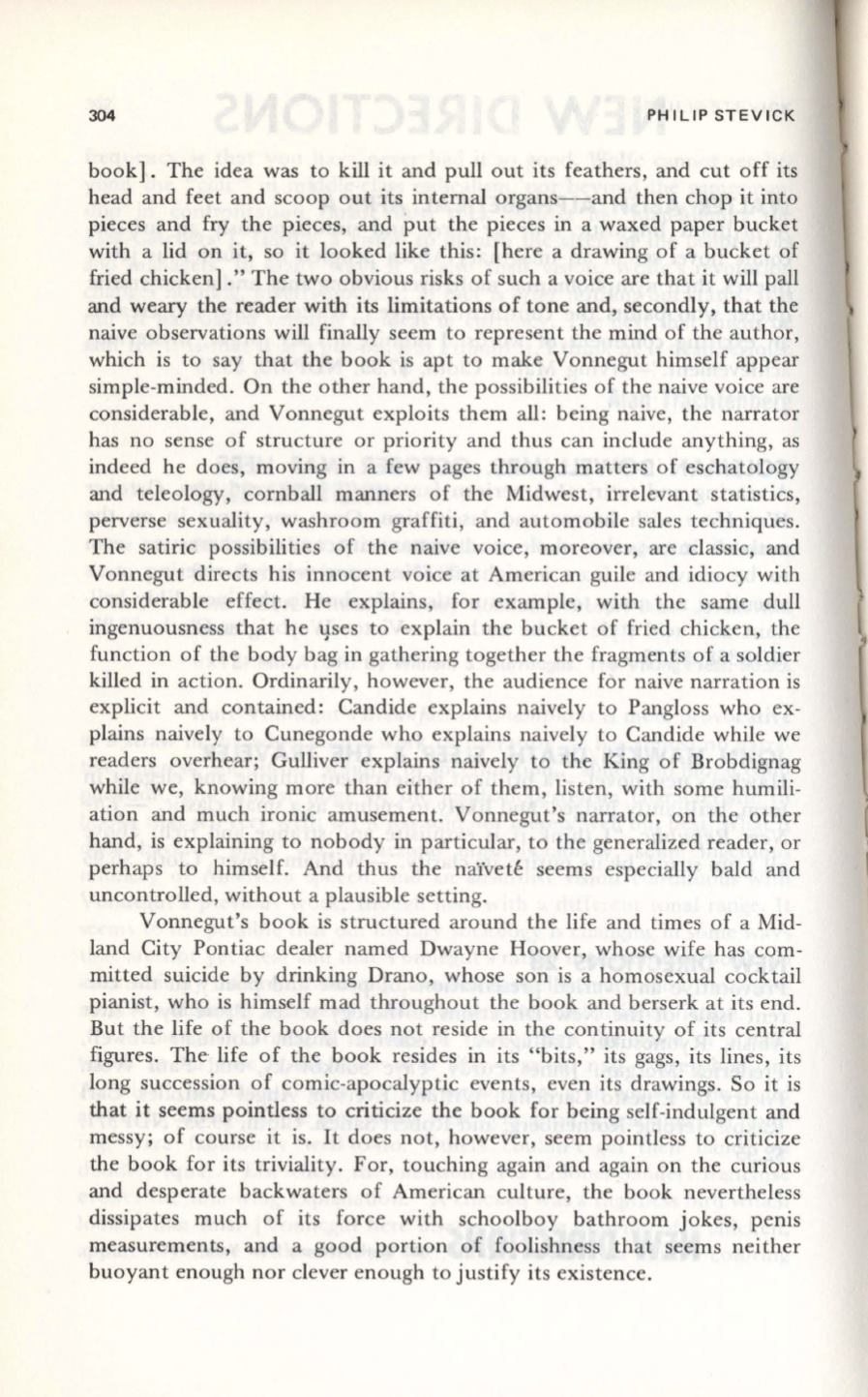
304
PHILIP STEVICK
book]. The idea was to kill it and pull out its feathers, and cut off its
head and feet and scoop out its internal organs--and then chop it into
pieces and fry the pieces, and put the pieces in a waxed paper bucket
with a lid on it, so it looked like this: [here a drawing of a bucket of
fried chicken] ." The two obvious risks of such a voice are that it will pall
and weary the reader with its limitations of tone and, secondly, that the
naive observations will finally seem to represent the mind of the author,
which is to say that the book is apt to make Vonnegut himself appear
simple·minded. On the other hand, the possibilities of the naive voice are
considerable, and Vonnegut exploits them all: being naive, the narrator
has no sense of structure or priority and thus can include anything, as
indeed he does, moving in a few pages through matters of eschatology
and teleology, cornball manners of the Midwest, irrelevant statistics,
perverse sexuality, washroom graffiti, and automobile sales techniques.
The satiric possibilities of the naive voice, moreover, are classic, and
Vonnegut directs his innocent voice at American guile and idiocy with
considerable effect. He explains, for example, with the same dull
ingenuousness that he lJses to explain the bucket of fried chicken, the
function of the body bag in gathering together the fragments of a soldier
killed in action. Ordinarily, however, the audience for naive narration is
explicit and contained: Candide explains naively to Pangloss who ex–
plains naively to Cunegonde who explains naively to Candide while we
readers overhear; Gulliver explains naively to the King of Brobdignag
while we, knowing more than either of them, listen, with some humili–
ation and much ironic amusement. Vonnegut's narrator, on the other
hand, is explaining to nobody in particular, to the generalized reader, or
perhaps to himself. And thus the naiVete seems especially bald and
uncontrolled, without a plausible setting.
Vonnegut's book is structured around the life and times of a Mid–
land City Pontiac dealer named Dwayne Hoover, whose wife has com–
mitted suicide by drinking Drano, whose son is a homosexual cocktail
pianist, who is himself mad throughout the book and berserk at its end.
But the life of the book does not reside in the continuity of its central
figures. The life of the book resides in its "bits," its gags, its lines, its
long succession of comic-apocalyptic events, even its drawings. So it is
that it seems pointless to criticize the book for being self-indulgent and
messy; of course it is. It does not, however, seem pointless to criticize
the book for its triviality. For, touching again and again on the curious
and desperate backwaters of American culture, the book nevertheless
dissipates much of its force with schoolboy bathroom jokes, penis
measurements, and a good portion of foolishness that seems neither
buoyant enough nor clever enough to justify its existence.


